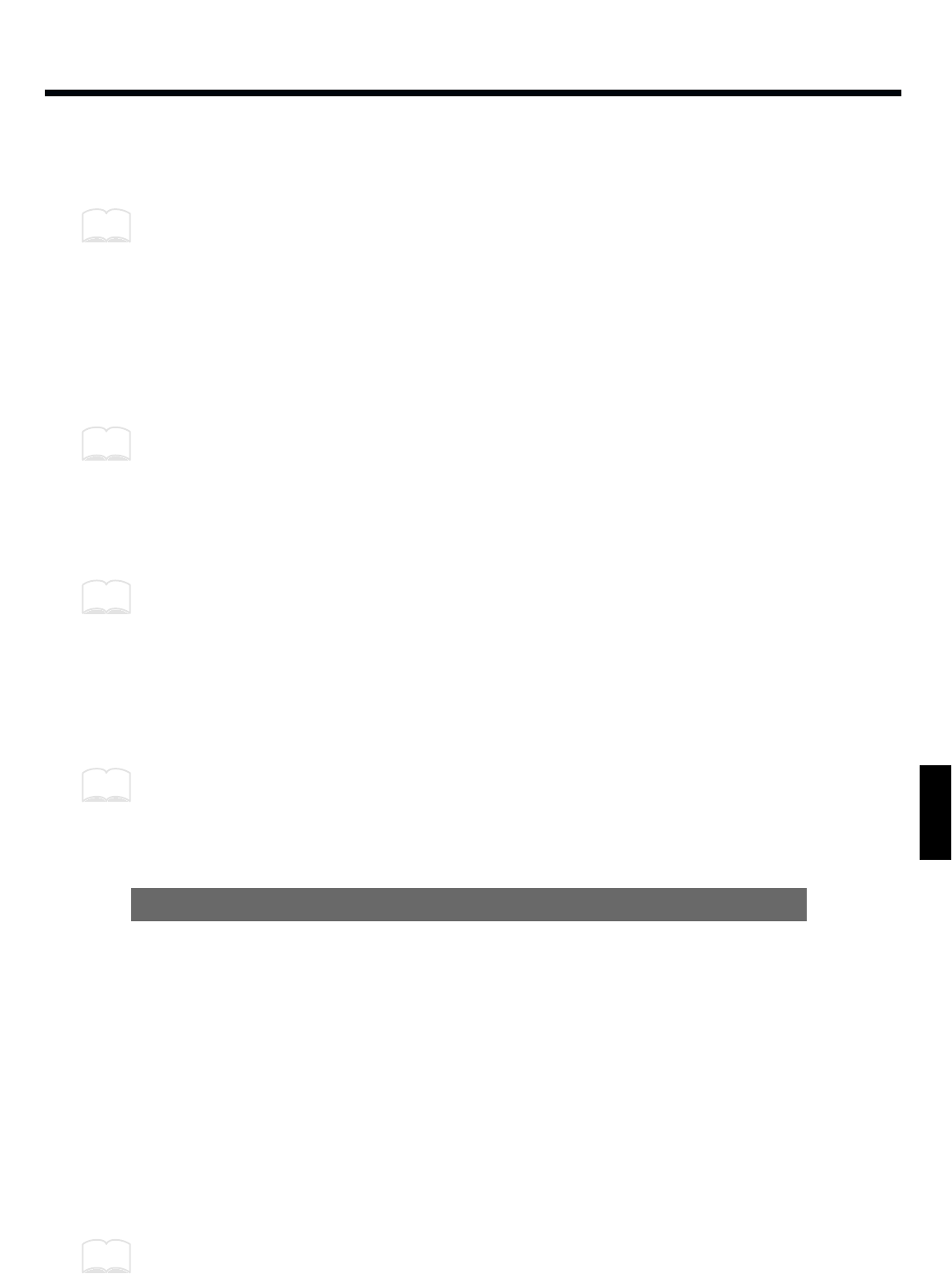
The Note Numbers fall within the range of 0–127, with middle C (C4) as number 60 (p. 62).
Note numbers usually specify the pitch of the sound to be produced, but for rhythm sound generators,
they specify the type of drum sound (the Instrument) which is to be played.
With the SPD-20, Note Numbers for transmitting and receiving are set with the MIDI parameter
NOTE #.
• Aftertouch messages
Aftertouch messages are transmitted by some keyboards when you press down on the keyboard after
playing a note. The degree of pressure (aftertouch) can thus be used to control various aspects of the
sound. There are two types of aftertouch messages. Data which is transmitted independently for each
key is called Polyphonic Key Pressure, and data which is transmitted for the overall keyboard (without
differentiating between individual keys) is called Channel Key Pressure.
The SPD-20 transmits Polyphonic Key Pressure messages when the rim area of a pad (PD-7, PD-9) is
squeezed or released. When the SPD-20 receives Polyphonic Key Pressure messages from another
MIDI device, its sound will be affected in the same way as when the rim area of a pad is squeezed.
• Program Change messages (1–128)
These messages are usually used to select sounds.
The SPD-20 can transmit Program Change messages to select Patches on external sound modules (p .
65). When the SPD-20 receives a Program Change message from another MIDI device, the Patch will
change (p. 69).
• Control Change messages
These messages convey various types of information that make a musical performance more expressive.
Each message carries a control number that indicates which function it is to control. The result will
depend on the MIDI device.
With the SPD-20, you can transmit PAN Control Change messages to each pad individually.
The SPD-20 transmits movements of the hi-hat control pedal as Control Change messages (p. 56).
When it receives Control Change messages from another MIDI device, its sound will be affected in the
same way as when the pedal is moved.
Data not differentiated by channel (System messages)
System messages include Exclusive messages as well as other messages that keep a MIDI system run-
ning smoothly.
• Exclusive messages
Exclusive messages are used to transmit and receive data which is unique to a particular device (such as
Patch data). This type of data can be received and transmitted between devices of identical type and
manufacturer. For details, refer to the MIDI Implementation (p. 98).
• Start
This message starts playback of a song on a sequencer from the beginning of the song.
• Stop
This message stops playback of the sequencer song.
• Continue
This message is for starting playback of a sequencer song from the current location.
With the SPD-20, you can make external sequencers start, stop, and continue by striking the pads (p.
61).
MEMO
MEMO
MEMO
MEMO
MEMO
59
1
2
3
4
5


















